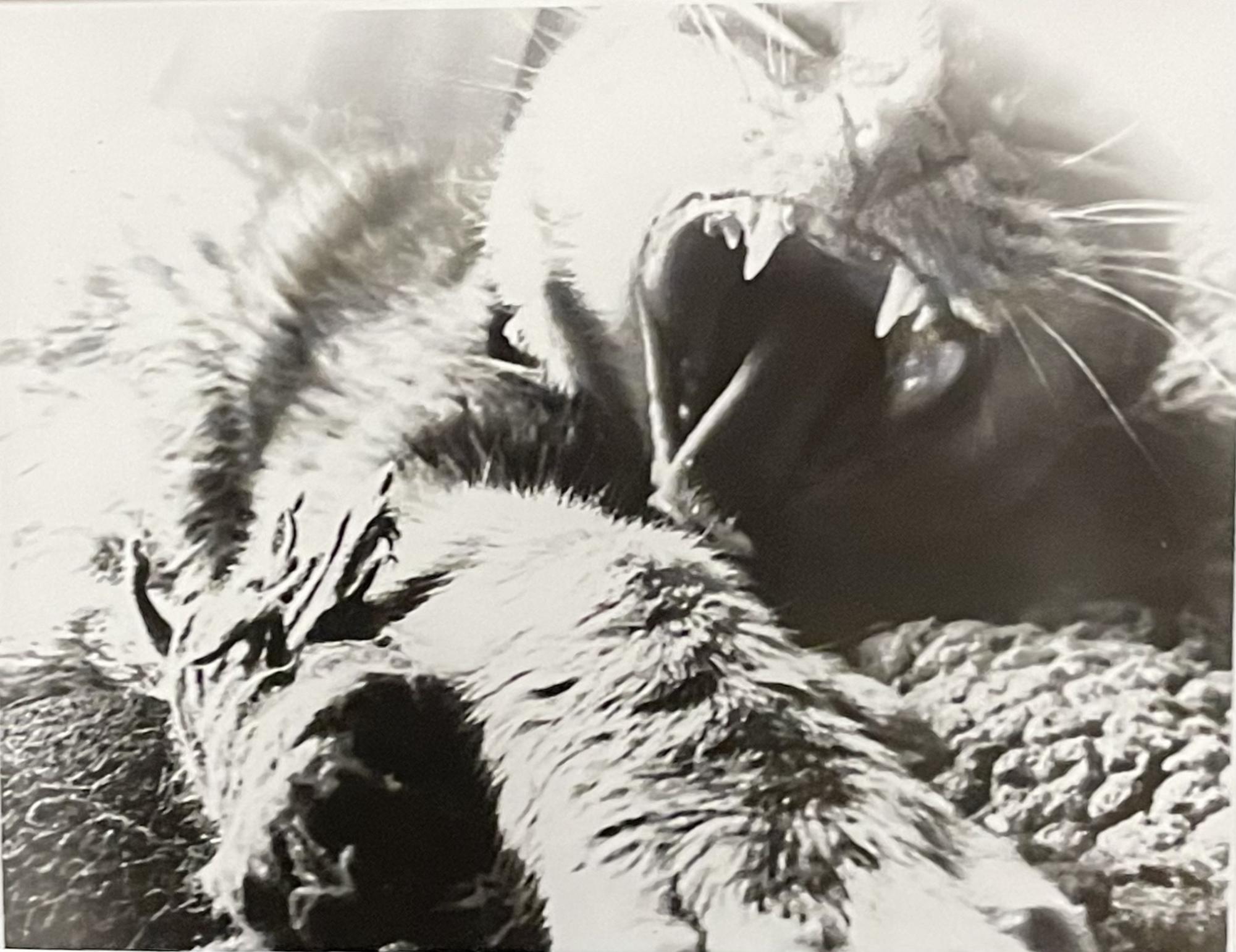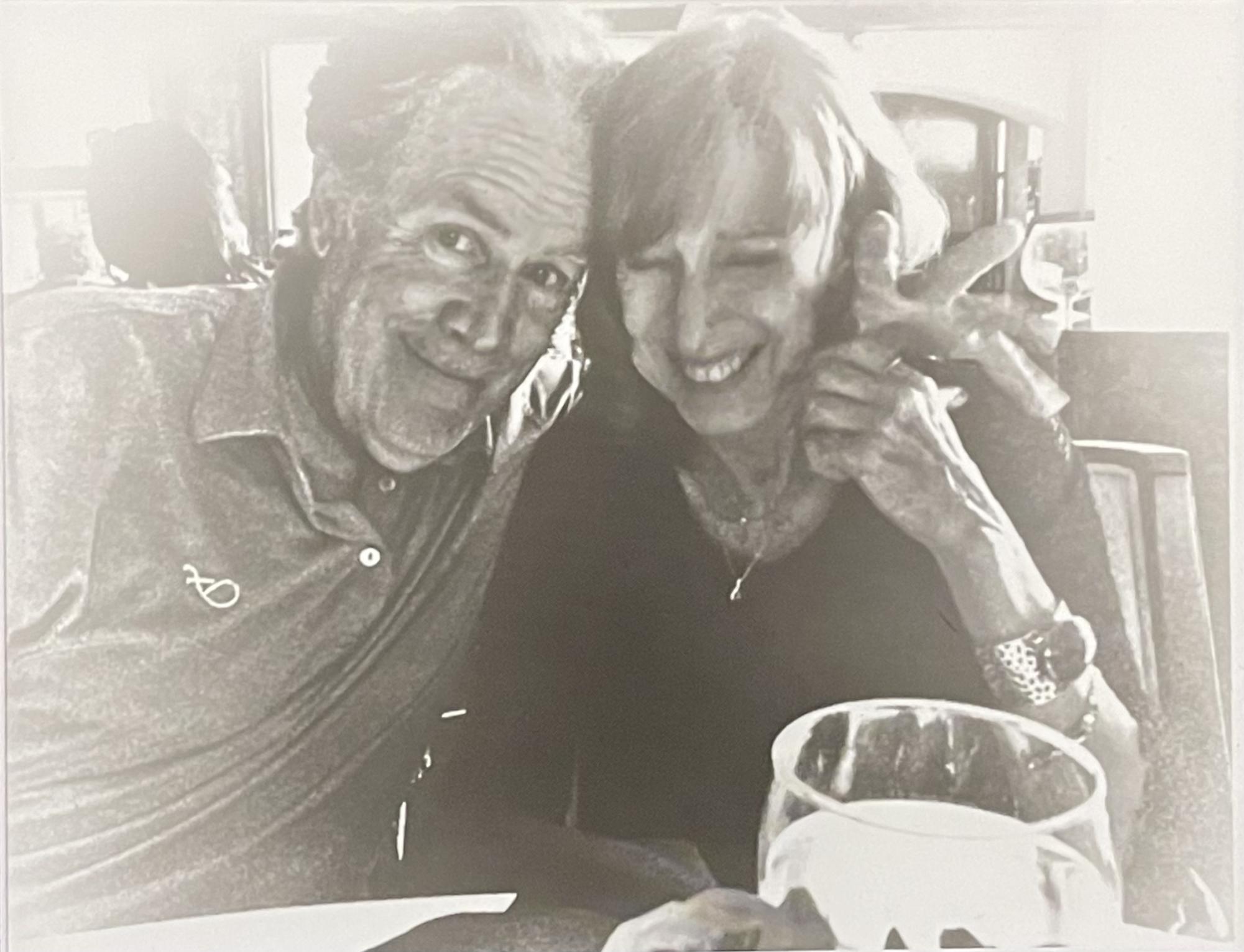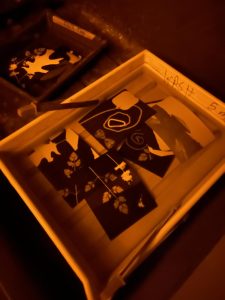To begin the developing process, he moves the wash back and forth, waiting to see if the image he took would appear. The film develops; he waits a few seconds, then uses tongs to place the film into the stop wash. He puts his photo on a screen to dry it off and holds it as he leaves the darkroom to enter the classroom. He looks down at his first developed negative.
As technology advanced, more people were able to capture photos with just a click of a button. However, film has been crawling its way back in recent times, especially among teenagers. The film-like aesthetic filters have been popular through Instagram and other social media platforms. With the rise of film trending, this has influenced many to learn and take photos using film photography.
From the start of the second semester, Art Photography students have moved onto their film unit. To get started with working and understanding film, students designed a pinhole camera using a box. The pinhole camera allowed a light-sensitive film to be placed to get exposed to light, to create an image.
“I’ve been waiting for [this] the whole year,” senior Alvaro Monsanto Nascimento said. “I also enjoyed the digital part of the camera and liked learning how to take pictures by myself. But the big one is learning how to take a film picture.”
In contrast with digital cameras, film has certain qualities that digitals can’t grasp. Film produces a stronger and richer image. Additionally, each photo has its own characteristic that sets it different from the others.
“You’re never gonna use film pictures for photojournalism or photography in general,” Monsanto Nascimento said. “But if you just wanna do something different because you enjoy it or if you wanna use it for art purposes, there are things which you can do on film that you can’t do on a digital camera.”
To use the pinhole to create a negative, you place the light-sensitive film into the pinhole box, and keep it closed, in order for no light to get in. Once at the designated spot, you open the flap of the box and keep it still depending on the brightness of the location. Then, you keep the box closed until you get into the darkroom, and start developing.
“I think it’s cool how we could [use a pinhole to take photos],” junior Saanvi Gunda said. “Right now we use phones, so [now] we can see how cameras came to be.”
To develop a negative, you first have to put the light-sensitive film into a developing chemical for 90 seconds while mixing the container. Then, you place the film into a stop chemical that stops it from developing. After that, you place the film into a fixer that lets the photo not be sensitive to light. Lastly the film goes into a wash that cleans it from any chemicals.
“I saw that it takes time and patience,” Gunda said. “Sometimes the picture doesn’t work out and you might need to retake it.”
In film, negatives are the opposite of how an image would look, where the light colors would be dark and the dark would be light. Students can turn a negative into a positive where the colors will flip, turning the positive into a normal photo.
“When I first got the negative it wasn’t how I expected it to look but the positive looked like how you thought negative would,” junior Alex Morgan said. “I was pretty happy with [the positive]. It was an interesting process. I did not expect it to be as simple as it was.”
While the process of developing film could take up to 10 minutes, students inside the darkroom form a bond with each other as they wait and help each other out with developing.
“I didn’t spend enough time yet to develop any fun memories, but I’ve enjoyed talking to the people there that are also waiting,” Monsanto Nascimento said. “I talked more inside the dark room than I talked, all year in photography class.”
Some problems that were faced during the pinhole project were shaking when taking the photos, exposing the light sensitive film to light before entering the darkroom, keeping the film in the developing wash for too long and having light inside the dark room.
“My favorite part is just the first process, which is like putting it in and then waiting for it to develop,” Monsanto Nascimento said. “But it’s also the most frustrating one because it’s the one, you know, if you fail or not.”
























